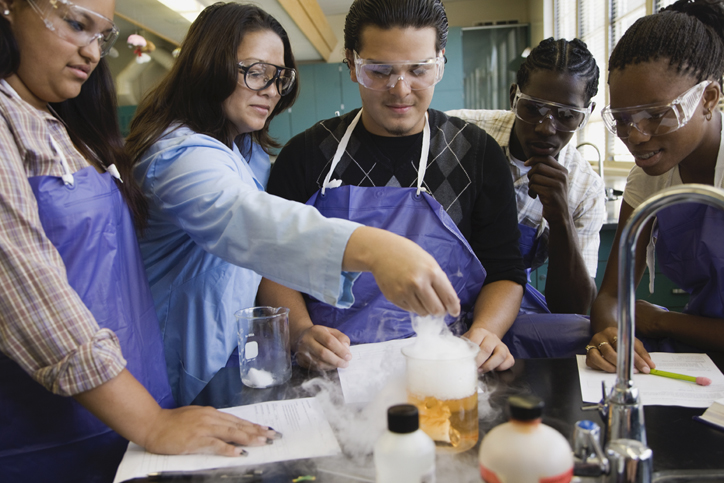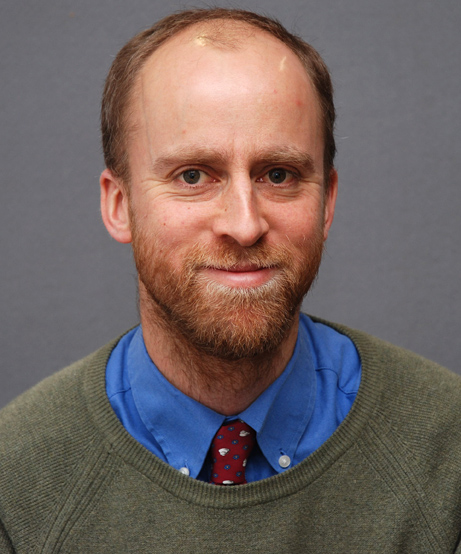28 OCTOBER 2019
Supporting and challenging students in science lessons

When you’re busy, providing support and challenge for all your students can seem impossible. But establishing an inclusive science classroom – one in which all students feel able to progress – relies on six key principles.
1. Take time to work out your students’ starting points, so you pitch the lesson correctly.
2. Don’t try to teach everyone all together. Get students to spend most of their time working independently through learning activities, working ideas out for themselves.
3. Get students to work together, supporting each other. Students can often explain scientific ideas more effectively than you can – they explain in a language that other students can understand.
4. Give yourself chance to help those who need it. You can’t do that from the front of the room. If students are working on learning activities independently and together, you can circulate around the class, asking questions, and helping students who are having difficulties.
5. Make sure every student experiences success. If you’re asking questions, start with easier questions to give students a sense they can achieve. Praise students’ achievements by helping them to see what they’ve done well, or what was good about their answer. Value students’ work, and develop their belief in their own ability.
6. Be prepared to adapt. If they don’t understand, explain in a different way, or ask questions to diagnose their problems. Modify or explain complex words. Give students more time to complete their work.

With an inclusive classroom, what else can you do to support and challenge students in the science classroom in particular?
1. Encourage stretch and challenge. Design tasks with command words from the highest levels of Bloom’s taxonomy, e.g. analyse, classify, construct, create, critique or justify.
2. Help students with scientific language. Use word banks; practise saying scientific words as a class; visually link a word to its explanation; talk about the meaning of words (e.g. photo – light, synthesis – making); label shelves with the names of equipment stored there.
3. Communicate in ways that replace or supplement language. Use demonstrations, graphs, images, diagrams, animations and photographs; give instructions orally, in writing, in diagrammatic form, and in video form.
4. Focus on safety. Establish routines; keep the goggles in the same place every lesson; undertake separate risk assessments for each class.
5. Encourage positive behaviour and participation. Allow students to report practical investigations without needing to write (e.g. videos or PowerPoints); value and build on students’ interests in lessons; encourage curiosity, students’ questions and sharing of personal experience.
6. Reduce the chance of poor behaviour or boredom. Position practical equipment to minimise students’ opportunity to disrupt others; allocate students to groups, rather than letting them choose; stagger the start of a practical activity to avoid students crowding around the equipment.
7. Break things down for students. Split stages in a process into separate small steps; think about questions in advance, focusing one question on each concept.
8. Help students to process information. Design practical instructions so students know what to do, think and write; before starting a practical, ask students to explain the protocol in their own words.
9. Provide support with abstract ideas. Focus on the meaning of technical words; start by exploring scientific ideas in everyday contexts; use modelling, drama, simulation and role play; focus on one concept at a time, rather than several at once.
Hopefully I’ve convinced you that including all the learners in your classroom is not as hard as you may have thought. Focus on building an inclusive science classroom, and you’ll see the difference in your students. Good luck!
 |
Dr Mark Winterbottom is a Senior Lecturer in Science Education at the Faculty of Education, University of Cambridge. Mark co-leads the secondary PGCE course, teaching on the science and biology programmes. His research interests are in learning through inquiry, and in 'out-of-the-classroom' approaches to science education. He's also appeared as a special guest on our active learning episode of the Brighter Thinking Pod! |
Thank you for your feedback which will help us improve our service.
If you requested a response, we will make sure to get back to you shortly.
×